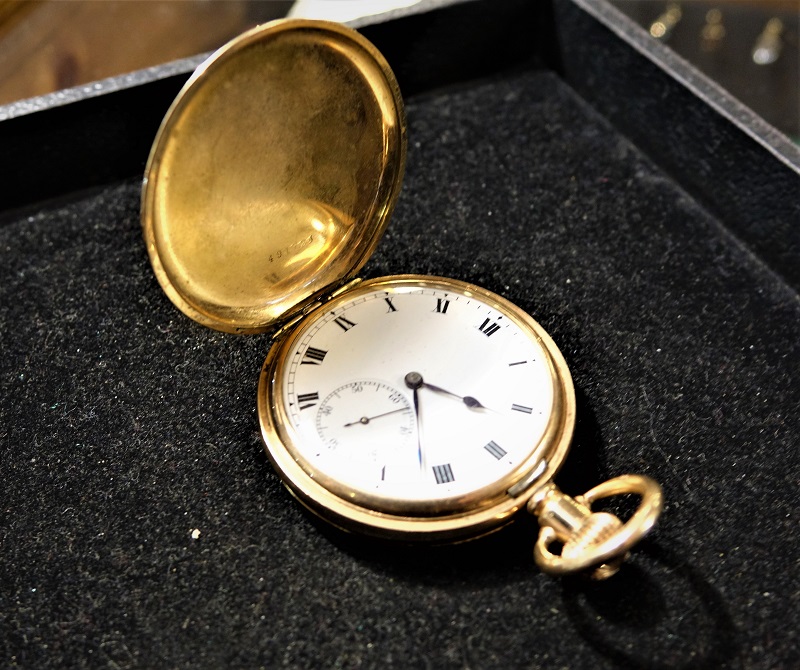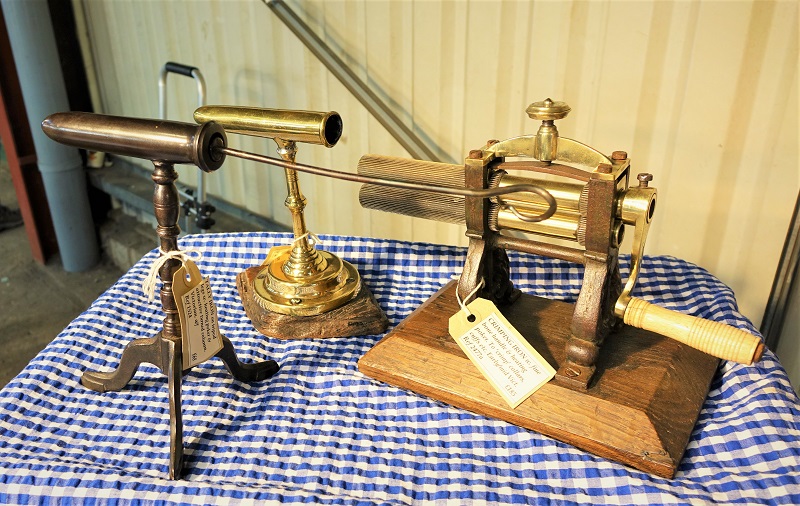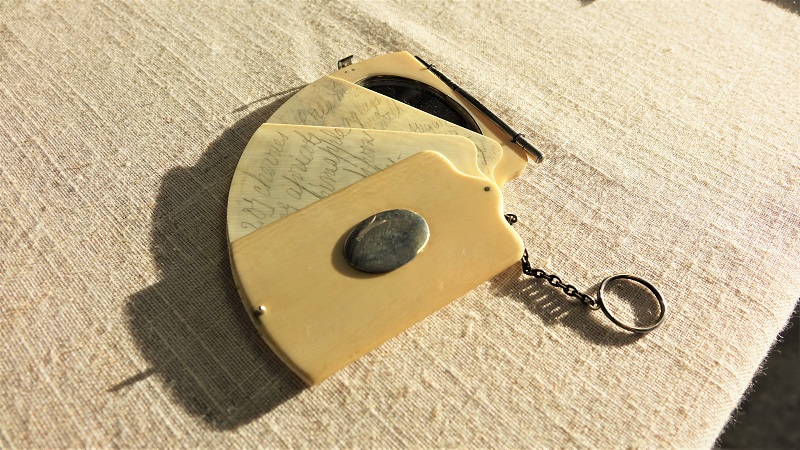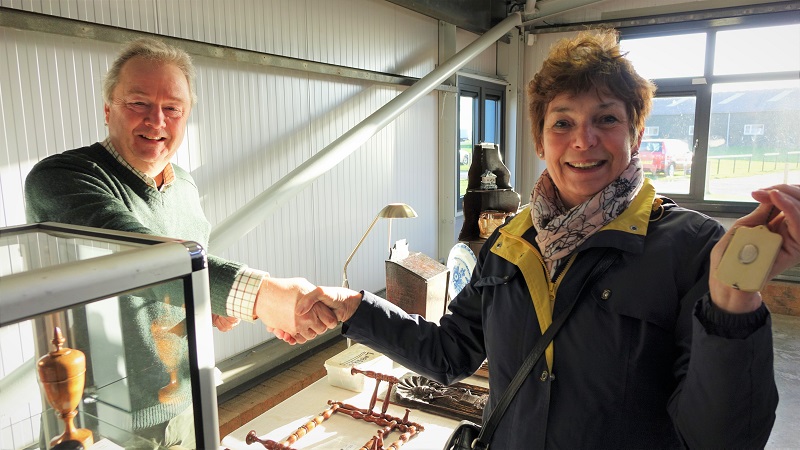What can you buy at an antiques fair with £100?
 We sent our writer to the IACF’s Newark Antiques Fair in Nottinghamshire, the largest in antiques fair in Europe, with a budget of just £100 per item to see what kind of things his money could buy.
We sent our writer to the IACF’s Newark Antiques Fair in Nottinghamshire, the largest in antiques fair in Europe, with a budget of just £100 per item to see what kind of things his money could buy.
Each month, in the darkness of the early morning, an army of antique hunters, lovers of vintage and excited interior designers make their way to various antiques fairs across the UK on a quest to track down the unusual, unique and eye-catching.
However, with hundreds of antique dealers taking part and a wealth of items – from furniture and silverware, to art, ceramics, and vintage film posters – all up for grabs, just how does a fair newbie know where to start?
What you can buy for £100 at an antiques fair
An antiques fair with thousands of stalls and millions of antiques can seem a bit daunting to the uninitiated; how can you possibly find the thing you’re looking for, particularly, if, like me, you don’t really know what you’re looking for?
Like everything in life, it’s best to know your limits, and today my limit is £100 to find something which wouldn’t look out of place in any home (or garden) in the land.
Early bargains
Another thing to remember about antiques fairs is: get there as early as you can. It’s usually less busy and you will see all the stock before the best items and bargains are picked up by the professionals.
With all this in mind, let’s have a look at the wide variety of things you could get with a budget of £100.
Precious Metal
Large antique fairs are one of the best places to source silver and gold items, whether they be jewellery, cutlery, picture frames or larger items:
Silver Salt server – Made in Birmingham c.1912.
A delightful little object in the original box. Salt is something we are advised to avoid these days, but this beautiful set has charm as a decorative display piece. Cost: £90.
Gold Plated Pocket Watch – c.1900
This elegant gentleman’s pocket watch is a full hunter, crown-wind example, with a 17-jewel adjusted movement, and I was informed by the vendor that, even though it was priced at £125 on the ticket, I would, in fact, be able to take it home for £100.
There are also any number of small silver objects that are available for around or under the £100 mark:
- salt and pepper pots
- spoons
- napkin rings
- sugar tongs
Overseas buyers of silver
Silver is very popular with the overseas buyers at large international fairs, largely because precious metals will hold their value well (so pricing is reliable), and it is also easy to transport – so no expensive shipping costs.
If you have travelled any distance to attend the fair, and don’t have a large van of your own, then this is something worth bearing in mind too.
Furniture
There is furniture everywhere at the fair, of every era and style, and able to suit virtually every interior and budget. Whether you’re after 17th-Century gateleg tables, English oak coffers, or more contemporary art deco or G-Plan items, you will be spoilt for choice.
Just one example of exceptionally good quality and value is this early 20th Century Oak Glastonbury Elbow Chair. It is extremely solid, and you can feel its strength and durability. Offer around £100 and it’d be yours.
Original Artwork
You will find original artwork in abundance at the larger fairs like Newark, Ardingly & Shepton.
Paintings by renowned and listed artists can obviously fetch thousands, if not tens or hundreds of thousands.
However, you can find beautiful original pieces by less well known – but often no less competent – artists, for a fraction of the cost. These sepia life-drawing sketch studies, by artist L. Gladstone can be bought for around £30 each.
Jewellery
There are stalls which specialise in antique jewellery, costume jewellery, Scandinavian jewellery, tribal jewellery, vintage jewellery and artisan designed modern jewellery.
If you are looking for a gift for someone special (or yourself), you really won’t be able to make up your mind, the choice available is so vast!
These rings made from silver and Whitby jet can be bought for around £30 – £60.
Ceramics
Doulton ware
If you are looking for something with a bit of age, heritage and class, but that will still look at home in even the most modern interior, you won’t go far wrong with something by Doulton Lambeth.
The Doulton Series Ware from the first half of the 20th Century is more accessible (in price and style) to the casual ceramics collector, and items like the ones pictured are all available for around the £100 mark.
Contemporary appeal
All hand-made and hand-painted, many of the designs can still be regarded as contemporary-looking even today, with the artists from the Doulton Series Ware studio having had a large and lasting influence on the later Studio Ware pottery of more modern times.
Top Tiles
Ceramic tiles are another thing from the past which are popular with today’s interior stylists.
This series of ‘Village Life’ tiles, designed by W. Wise c.1885 for Mintons are priced at £65 each, with a charge of just £9 to have them framed. With prices as low as £20 for a tile, they could be a very affordable and eye-catching antique feature for your home.
Kitchenalia
Kitchenalia – the term used – as you might have guessed – for items you might find, and still use, in the kitchen.
These lovely Victorian, copper jelly moulds can obviously still be used but are more likely to provide decoration in a modern kitchen. Priced at £45 each or £80 for the pair.
Crimp your style
Starching collars and crimping ribbons is something we don’t tend to do too often these days, but those crazy Victorian ancestors of ours couldn’t get enough of it. So much so, they had a vast array of interesting implements with which to do the necessary crimping and starching, and like so much of what they made and designed, they made them beautiful as well as practical – and built them to last.
Implements with names like Sad-Irons, Tally-Irons and Crimping Irons, these attractive items have whole societies devoted to collecting them, and most are very affordable with prices often around or below the £100 mark. These are quirky, decorative items whose antiquated uses you can have fun explaining to visitors to your kitchen.
Treen and small decorative items
Treen
he term given to antique, small domestic wooden objects – sometimes dating back to the 1600’s, or earlier – these interesting objects have such a tactile appeal you’ll want to pick them up.
The wonderful warm patina that comes from centuries of being handled, makes these objects a delightful decoration to a shelf or table. For example, this Sycamore Butter Print with a rose decoration was made in England in around 1850, and it is priced at £95.
Decorative aide memoire
Also pictured is a very rare and interesting example of a 19th Century ‘Aide Memoire’ (a very early lady’s Filofax – remember those?). Made of marine ivory, with attractive ‘white’ metal mounts, the inside has marine skin pages for the owner to write down the things they need to remember.
Amazingly, it still retains the original swivelling pencil and chain, used for attaching it to the lady’s chatelaine. Also preserved, is the handwriting of a previous owner, with a lengthy shopping list including: cherries, soap, cream, milk, gloves and brandy!
Whilst I was photographing this item, an interested lady buyer asked the vendor the price of the object, and after a small amount of negotiation, it exchanged hands for £130. A little over the £100 budget I had, but not a million miles away.
Vast choice
So, as you can see, the choice is vast and the variety of items at a big fair is mind-boggling. There is something for every taste and budget.
Good advice
 The best bit of advice I can give is: have some idea of what you are looking for before you get there! And make sure you give the whole place the once over before choosing the thing you want.
The best bit of advice I can give is: have some idea of what you are looking for before you get there! And make sure you give the whole place the once over before choosing the thing you want.
Snooze you lose
There is nothing worse than purchasing something, then walking around the corner to find a better version, in better condition for a better price! Having said that when you’ve seen a bargain it’s best to move fast – if you snooze, you lose, though most dealers will hold onto an item for a short period of time for you to make your mind up or visit the on-site cash-point.
Hidden treasures
There are many little bits and pieces scattered all over the showground. Some can appear to be junk and cost only a pound or two but remember that old saying: one man’s junk is another man’s treasure – this really is true.
Personal taste
Taste in objects is a completely personal, subjective experience, but it is definitely worth letting the stall-holders’ passion and knowledge for their chosen area of collecting enthuse and inspire you. It is interesting to step outside your usual tastes, open your mind and look for items that may not have appealed to you previously.
The list I have compiled barely scratches the surface, it is a mere drop in the ocean of the choice of objects available (many other similar clichés apply), so get yourself a sturdy trolley, comfortable walking shoes and a reliable companion (for any heavy lifting/carrying) and get along to your next antiques fair. There is a full calendar of iacf events on www.iacf.co.uk












